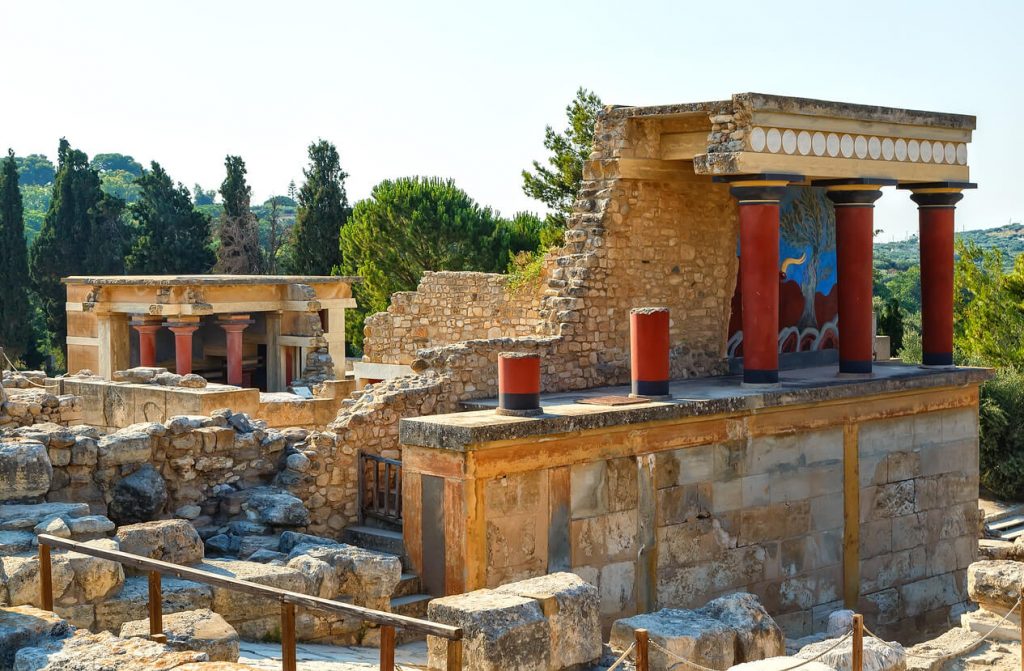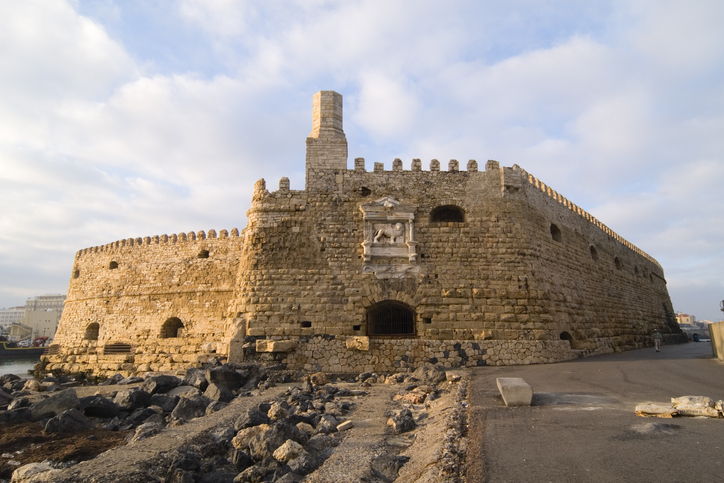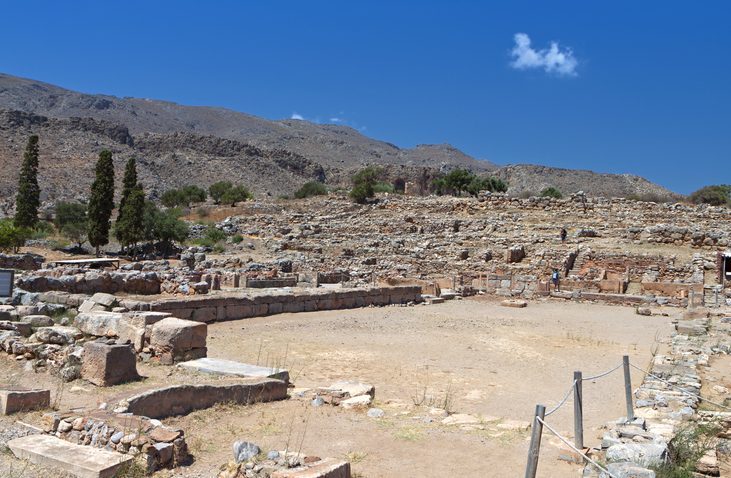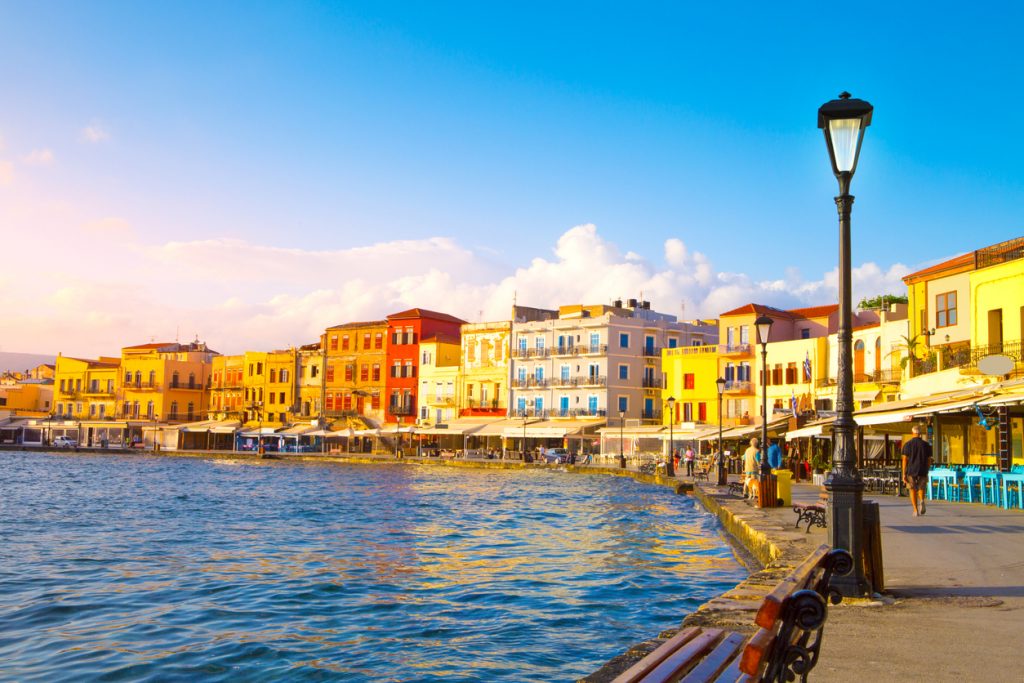Located in the very south of the Aegean Sea, Crete is the largest of Greece’s many islands. Its history goes back over 5,000 years, and bits of this colourful past can be seen across the island, from its Minoan palaces to its Roman cities, Byzantine churches and Venetian fortresses.
However, today Crete is best known for its splendid beaches and its tall mountains. Still one of the lesser-known gems of Greece, it’s largely free of the tourist hordes. So come here and get your fill of both natural beauty and ancient history with the many places to see in Crete:
How to get there

By Air
The quickest way to get to Crete is by air. There are daily domestic flights from Athens to the airports in Heraklion (the capital), Chania, and Sitia, as well as international flights to Heraklion and Chania from many destinations n Europe, such as Italy, France, Belgium, the UK, Germany, Sweden and Cyprus (though these may be seasonal)
By Sea
Crete is well served by ferries from the mainland, especially from Athens’ Piraeus Port. Major ports in Crete include Heraklion, Chania, Rethymno, and Sitia.
How to get around

There are no local flights in Crete, nor does the island have a railway system. However, there are other ways to get around.
By Bus
Buses are the main form of local transportation, and Crete has a fairly extensive network covering both major cities and rural villages. Fares are regulated by the government.
By Road
Having your own vehicle (whether it’s a car, motorbike or bicycle) can be a huge bonus in Crete; but, it’s good to keep in mind that, while distances aren’t that great, the narrow and winding mountain roads are sure to slow your progress. Additionally, if you want to drive yourself, remember to check the validity of your license, and the availability of fuel. Otherwise, taxis and car rentals are widely available.
Places to see in Crete
There are lots of amazing cultural and natural places to see in Crete. From glittering palaces to mountain gorges and serene beaches, here are some of the best:
Natural Sites

- Balos Beach — this incredible lagoon-like beach in Kissamos Bay is known for its turquoise waters white sand
- Chrissi Island — also known as Gaïdouronisi or Hrysi Island, it is famous for its golden beaches, cedar forest, and Belegrina, a beach covered with a mountain of shells
- Elafonisi – a famous beach, popular for its shallow waters and water sports opportunities, as well as for its stunning pink sands
- Vaï — this beach northeast of Sitia is said to be lined with Europe’s largest natural palm forest. Nearby are the quieter beaches at Itanos that are overlooked by Hellenic and Roman ruins

- Mt Psiloritis — Crete’s highest peak is topped with a small, twin-domed chapel, and has stunning views; it is a wonderful (though long) trek to the top
- Lasithi Plateau – this expanse of green fields is dotted with almond trees and orchards lies in a huge depression amid the rock-studded mountains of the Dikti range
- Dikteon Cave — sitting above the modern village of Psychro, this cave is said to be where – according to the myths – Zeus was born and hidden as an infant by his mother Rhea to protect him from his father
- Samaria Gorge — this 16 km long gorge was created by a small river running between the White Mountains and Mt. Volakias and is a major tourist attraction
Also Read: This Summer Visit the Ionian Islands of Greece
Cultural Sites

- Palace of Knossos — this Minoan palace is the largest (and most famous) Bronze Age archaeological site on Crete
- Heraklion Archaeological Museum — it has the island’s top collection of Minoan and other artefacts
- Phaestos — another important Minoan complex that has awe-inspiring panoramas of Messara Plain and Mt Psiloritis
- Ancient Lato — located near the small town of Kritsa, this fortified Dorian city-state is one of the best-preserved

- Lychnostatis Open-Air Museum — this seaside museum recreates a traditional Cretan village, with authentic windmills, schoolhouses and a farmer’s home
- Koules Fortress — located at the entrance of the old port of Heraklion this fortress was built by the Republic of Venice in the early 16th century
- Moni Toplou — the Toplou Monastery dates back to the 15th-century monastery located in a dry and barren area in the Lasithi Plateau
- Hania Archaeological Museum — this museum has a collection of artefacts from Neolithic to Roman times and is located in the beautifully restored 16th-century Venetian Church of San Francisco

- Kato Zakros — L Ancient Zakros, the smallest of Crete’s four Minoan palatial complexes, sat next to a harbour and was likely engaged in sea trade with the Middle East, as suggested by excavated elephant tusks and oxhide ingots.
- Gortyna — located near the modern capital Heraklion is Gortyna, the capital of Roman Crete, though it was first inhabited long before this, around 3200 BC
- Historical Museum of Crete — a wonderfully curated museum that covers what Crete’s history for the past 1700 years, from the Byzantine to the Venetian and Turkish periods, and up to WWII
- Fortezza — this imposing star-shaped citadel in Rethymno was built by the Venetians in the 16th century and was captured by the Ottomans in 1646

- Moni Arkadiou — the Arkai Monastery, southeast of Rethymno, dates back to the 16th century and is known for being the site of a battle with the invading Turks
- Venetian Harbour — lined with pastel-coloured buildings, this historic harbour in Chania is dominated by the domed Mosque of Kioutsouk Hasan, and is full of narrow lanes, shops and tavernas
- Spinalonga Island — a tiny island near the town of Plaka has a Venetian fortress and was once used as a leper colony
- Armeni — an ancient Minoan cemetery set in a beautiful oak forest with 231 tombs carved into the rock, it is located near Rethymnon
Also Read: The 27 Best Things To Do In Greece
Crete enjoys pleasant weather throughout the year, but the summers (Jul and Aug) can get quite hot, and also quite crowded. The low season (Nov to Mar) has fewer crowds, but also a higher chance of rain, and some sights will be closed. The best time to visit is during the shoulder season (Apr to Jun and Sep to Oct), as temperatures are moderate, there are few crowds, you’ll find lower rates and excellent opportunities for hiking and outdoor activities.


